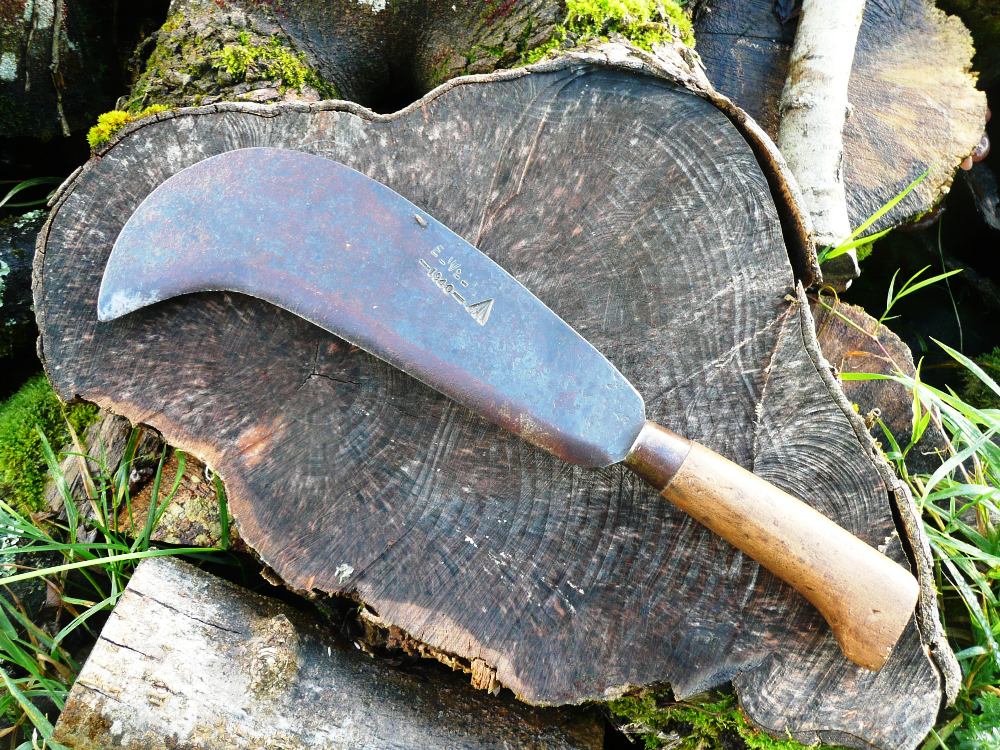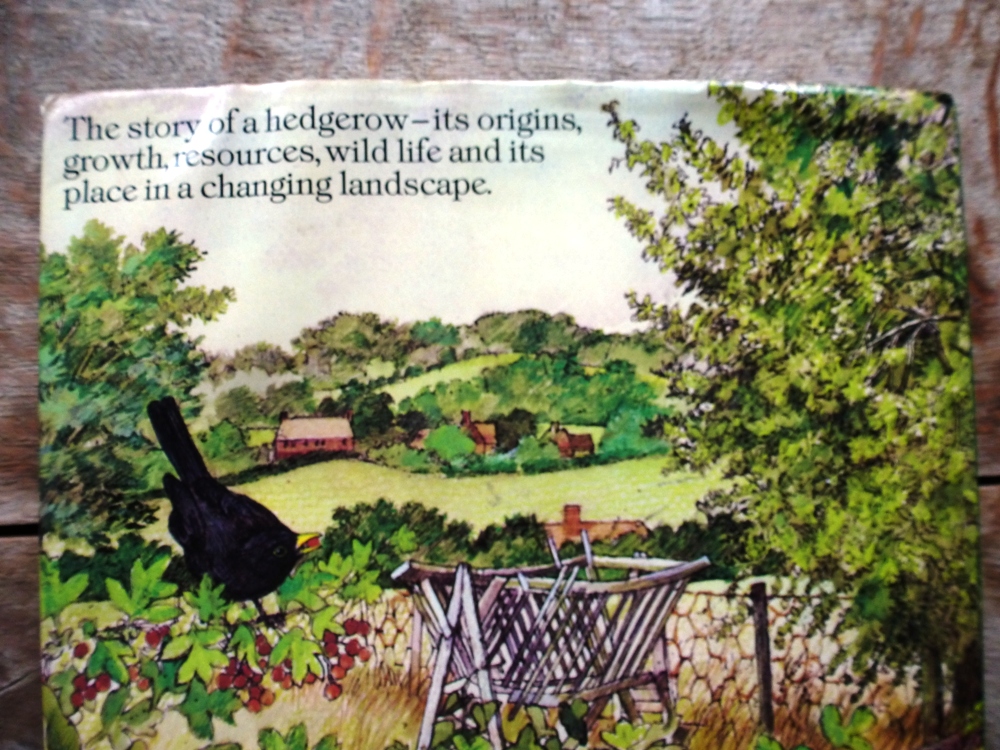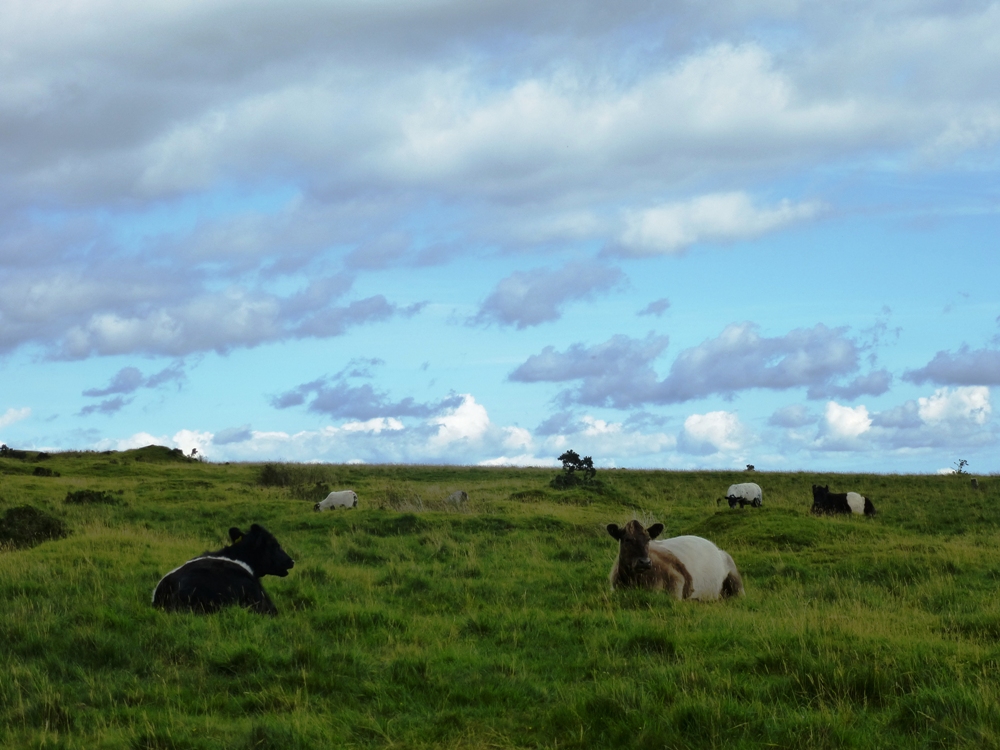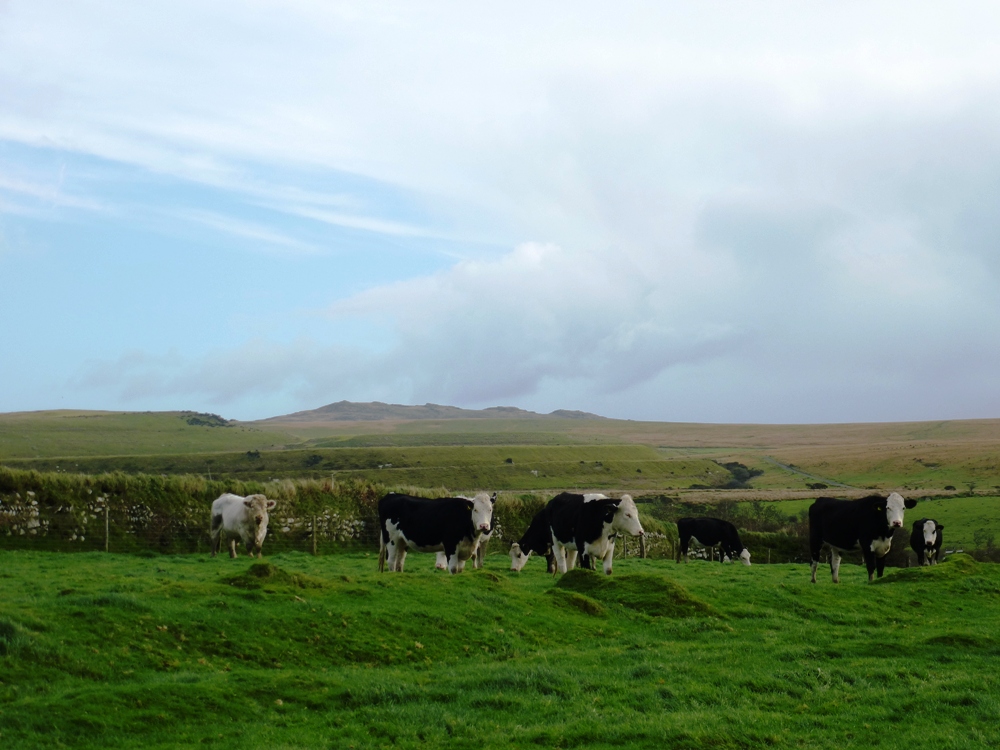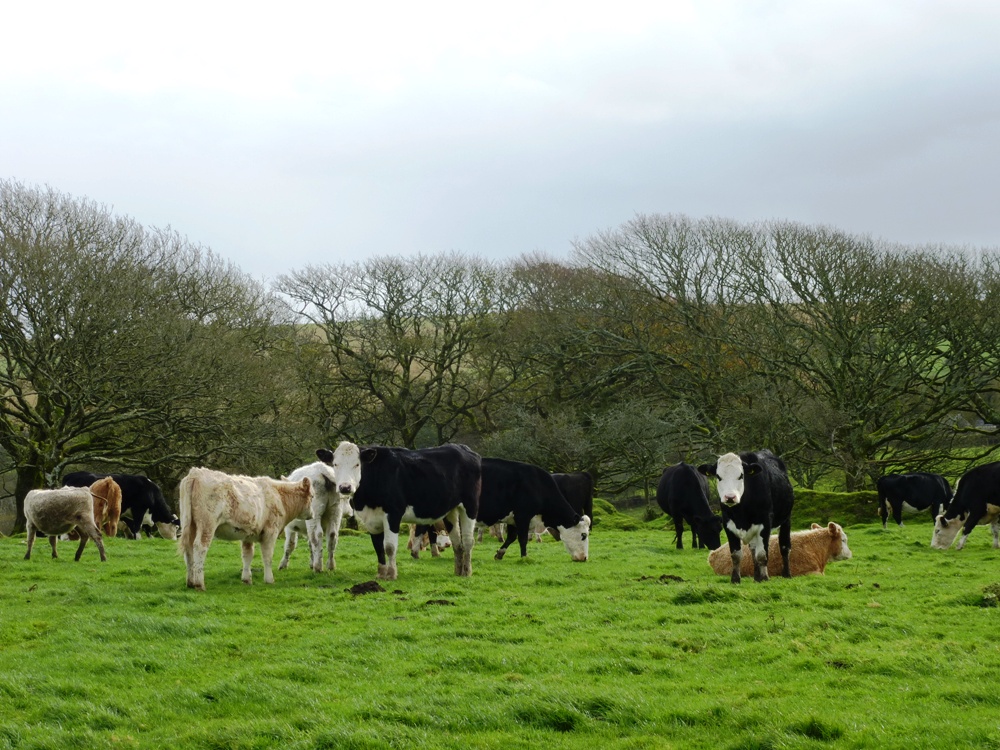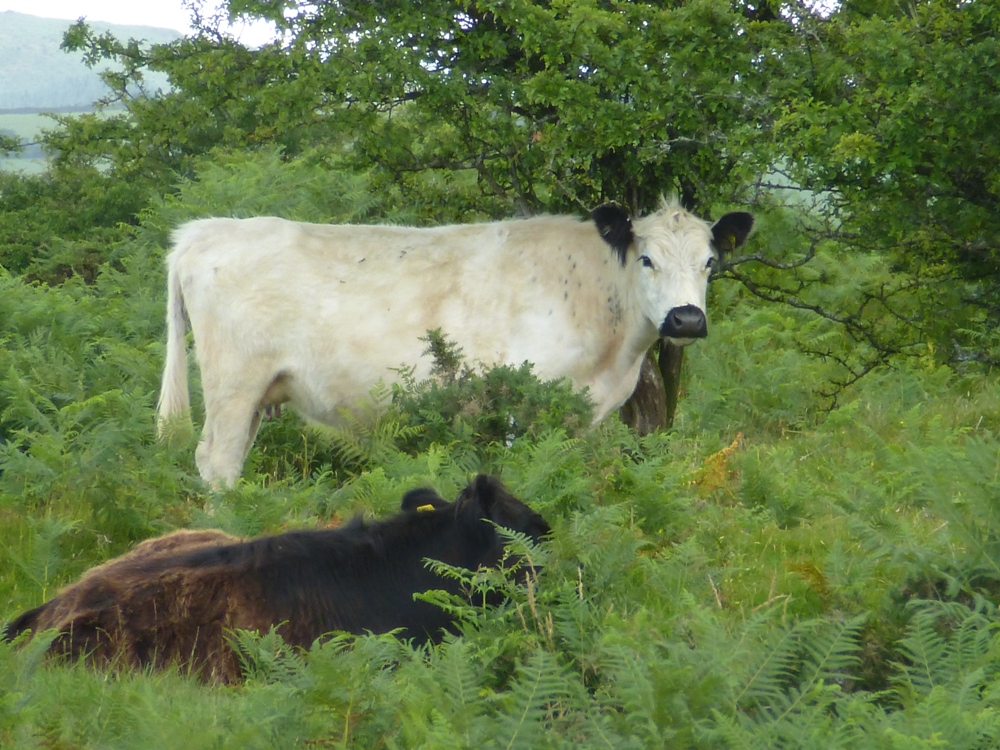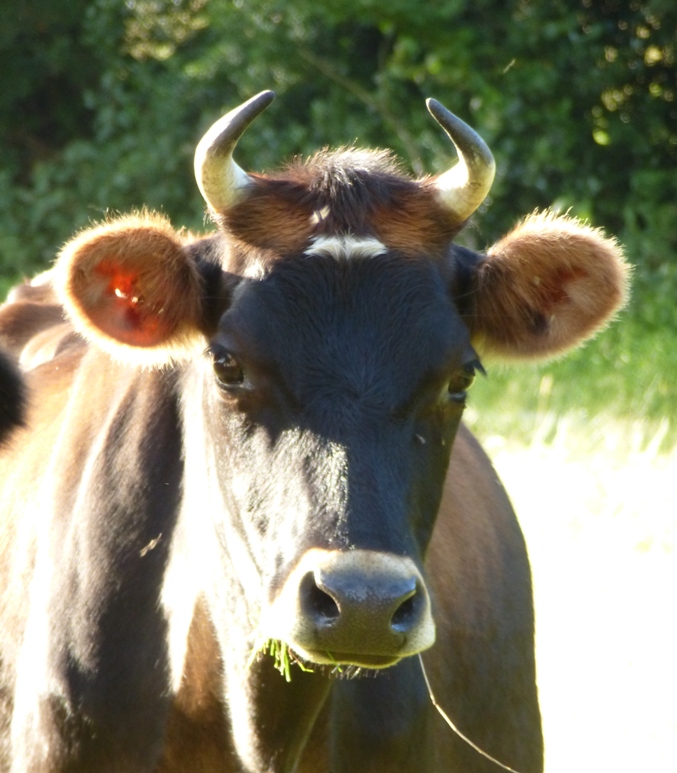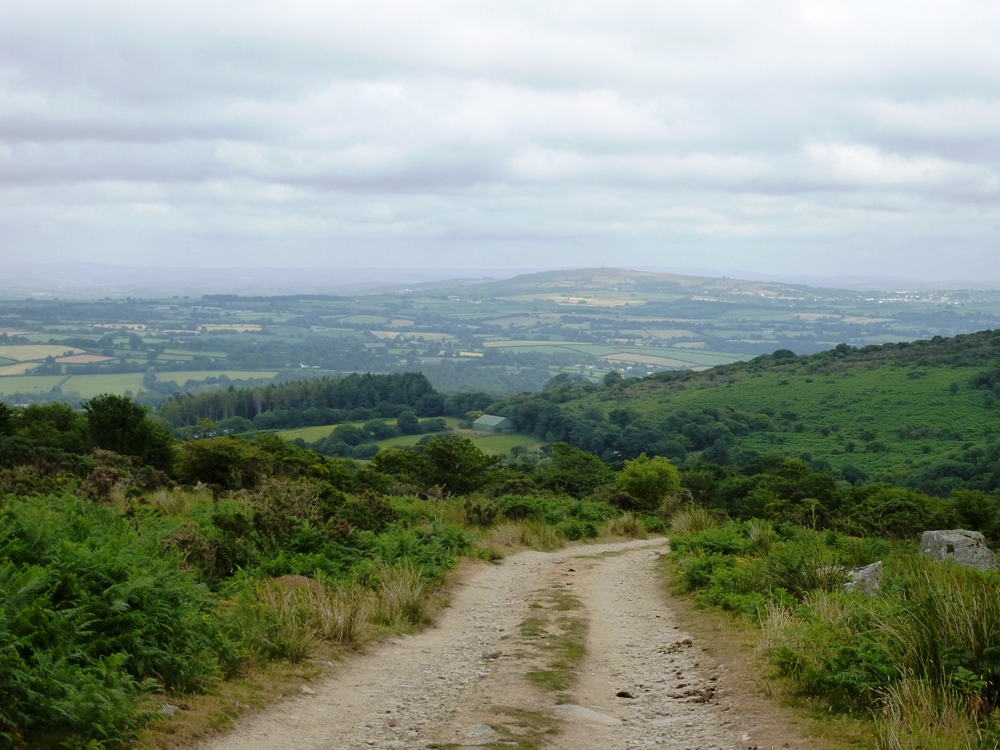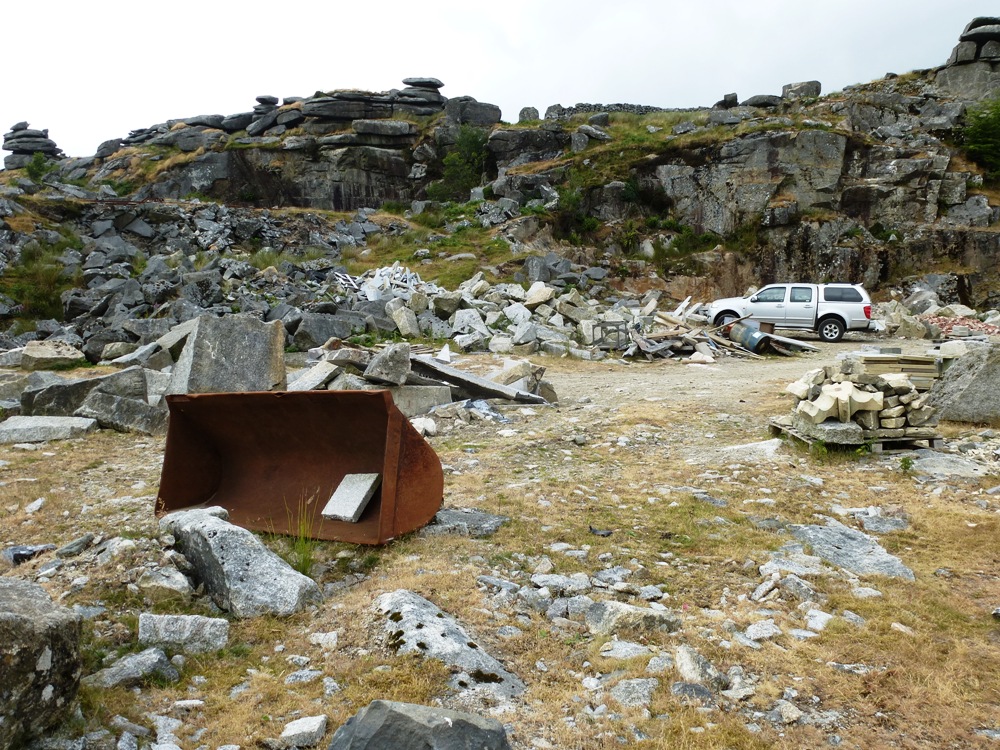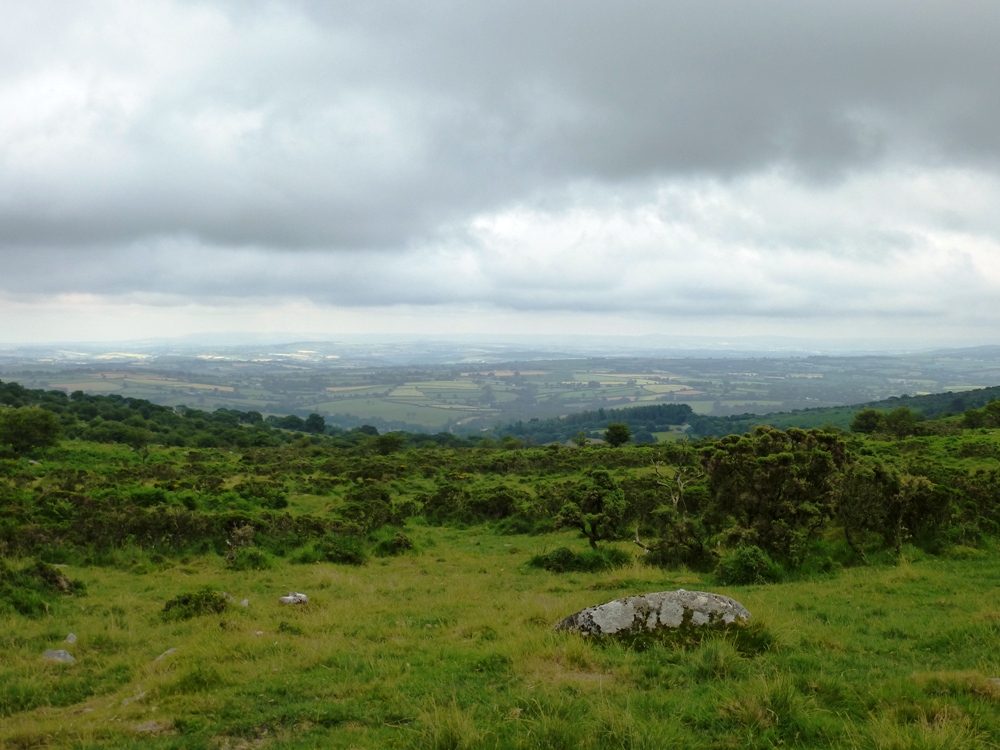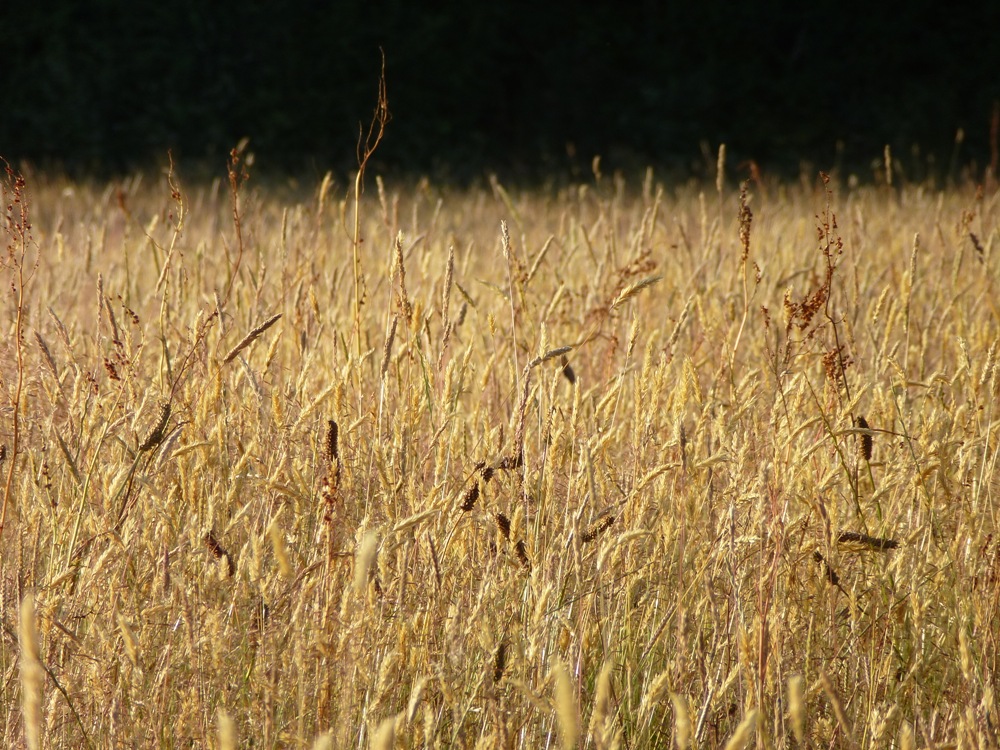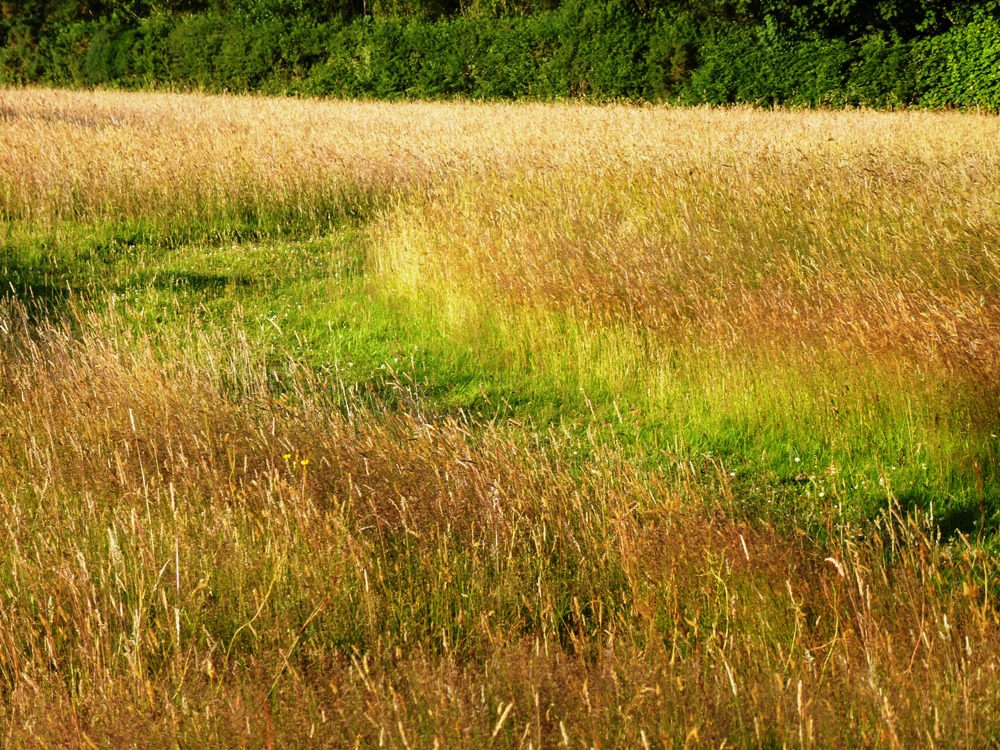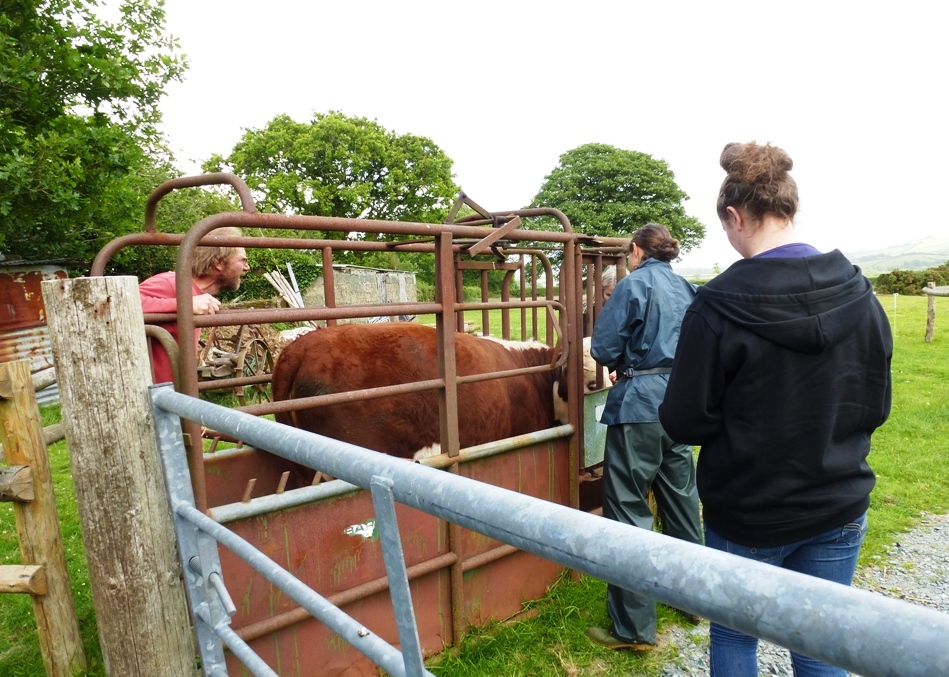A bowl of plums stands on the kitchen table, ripening one at a time. It’s been a good year for fruit.
Though I felt for the cherry farmer who’s crop ripened all at the same time because of the July heatwave. To grow them reliably in this country the trees have to be tented to protect them from … too much rain, too little sun, too much sun… and of course the wind. Gone are the days of thirty foot trees and tapering high ladders. These cherries are grafted onto a small rootstock. The huge investment has been made and it’s thirty miles of tenting which has to be raised or lowered according to need. The farmer and his workers are lean.

A balloon flying over
This September morning I will loop the bounds, walking out around the three and a half acres which encircle us. I step into the front yard and survey the slight devastation which the cows have wreaked on the galvanised trough planted with Black Scabious , Orange Cosmos and Cornflowers.

Yup, that’d be you
We moved the cows into the field behind the house after the hay was finally cut and baled in August (another 280 bales, distributed between us and others).
This was their first visit and they were suitably excited.

We put them in here to forage as they were getting a little rotund in the cow field. Now they seem to be lying down a lot, like it’s all a bit exhausting.


We cleared out the ground floor of the shippen so they have some undercover quarters should it take their fancy, but this entails them traversing the front yard, a cow free zone up til now, and hence the predation on my flowers. But I have always imagined them using the shippen just like our predecessor Mr. Creeper did. His cows used to come in the front door. We’re working on it.
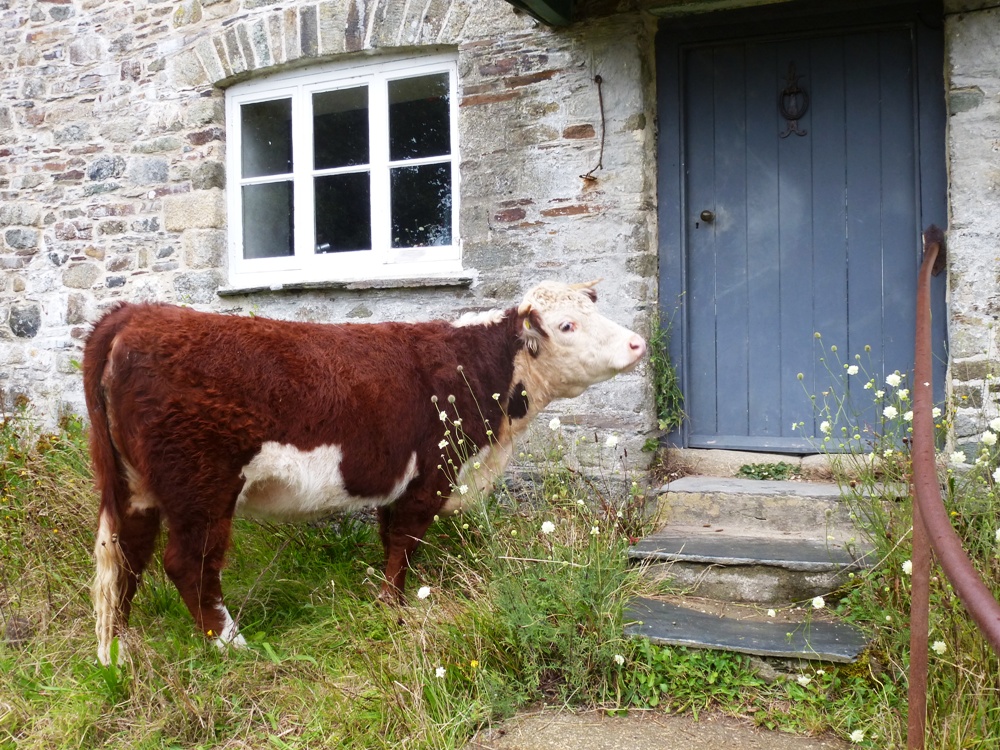
I carry on. Astonishing worlds of spiders webs are draped in the damp stalks. A wren rat-tat-tats from the front hedgerow where the young Elms are, descendants of the huge trees which once stood here and gave this place locally the name ‘the Elms’. Let’s hope the Ash doesn’t suffer the same fate. I can hear a plane, our neighbour crunches across the gravel and tinkers with something in the shed and a nuthatch barks from the phone wire, perhaps already staking a claim on a stony hole. The swallows are still here, flying high in the sky, clicking and wheeling. Although some kind of catastrophe befell our only pair I was pleased to catch some young fledglings over at T & N’s place when I went to visit the new calf.
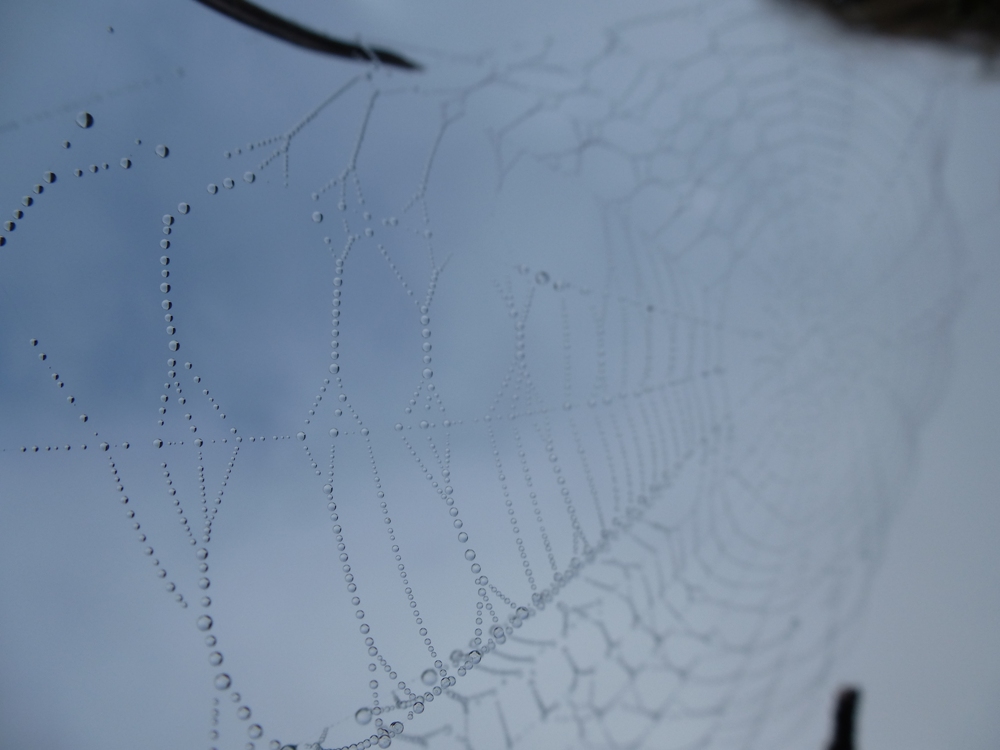

New calf? I hear you say.
Yes! Born only a few weeks ago to T & N’s Hollyhock this little heifer was sired by Herald, who, for those that don’t already know, was our shared bull who we had to have culled earlier this year due to Johnes disease. Luckily the disease is not passed onto calves in this way. This is Hollyhock’s first calf and she did splendidly. I missed the actual birth but arrived a couple of hours later and she let us approach quite close and only the next day allowed T to pick the calf up and move her indoors. Well done Hollyhock.

Two hours old
A wood pigeon is cooing high in the canopy and I can hear the jackdaws calling and cackling, landing and then swooping low over the field. The sun is warming things up and a tortoiseshell butterfly is spread out on the ground on some small stones then moves to a post. The Purple Knapweed has gone over, hard black seed heads silhouetted like little soldiers. A few bees are still buzzing around late flowers and the Goat Willow which has self seeded in the front of the house has been stripped of its leaves by the cows. I go through a gate into the garden, a development project which is still at the thinking stage for the moment.
The apple tree is weighted by both fruit and time, this one planted many years ago, it’s flattened profile telling of an espaliered moment. Bill Mackenzie, a yellow clematis, is curled around the swing seat supplying a nectar filling station for late honeybees. It’s whiskery whorls mingle with the bright sepals. One side of the garden boundary is the stone wall of the barn. In front of this are the collapsing stems of Wild Carrot, Yarrow, Woundwort, Deadnettle, Ragged Robin and Meadow Cranesbill. Windfalls stud the grass.

Leaving the garden I move on into the new orchard, part of the back field. Here we have the compost heap and the polytunnel. The trees are still young and have been slow to get established because of the wind but they are just beginning to produce a small amount of fruit. Sadly, a flurry of anticipation for a few pears was hijacked by a splitting event and then a wasp feeding frenzy. Empty husks of pears floated to the ground like lanterns. Sigh. The Dahlias did well though and they’re still going strong in the polytunnel.


As if splitting and and wasps weren’t enough…
The hedgebank here is full of Wood Avens, Foxglove and Bramble. The leathery straps of the Harts Tongue Fern are still green, feet-deep in between the stones and the one time feathery upstanding grasses; of Foxtail, Bent and Yorkshire Fog, are breaking up and bending down.
Senescence
I can see the cows coming down this way as my footsteps make a squeaky sound on the wet grass. Walking up the field, the hedgerow is a jumble of Bramble, Hawthorn, Hazel, Ladys Bedstraw and Dogrose. A young Ash which we’ve allowed to grow away is now fifteen feet, heavy with ash keys drooping like pea pods. A glossy compact Holly nestles comfortably, belonging in its place, and on the bank a plethora of next years Red Campion seedlings jostle one another in a thick bloom.

I duck under the electric fence which divides the field from the orchard and behind the birdsong I hear the rumble of traffic up on the top road a mile away. Rabbits have been making new holes as this years’ youngsters claim new territory. The blackberries are fat, dark and shiny, really black. They remind me of my grandparents in Kent and how we used to go out blackberrying and my grandmother would make blackberry and apple pudding or crumble. They loved their damsons too and told us stories of picking fruit during the war years. We are not the only ones who like the berries, flies are also fond. Bluebottle, Greenbottle, Horsefly, Dungfly, Biteyfly and a black one with tawny down trousers. A crow caws from neighbouring airspace, the woodpigeon coos again. On the reddy-orange hips of the Dogrose I find a peculiar growth.

Ivy wraps itself closely around the branches of a leaning hawthorn, a twiny embrace. Tiny green nodules are just beginning to show in clusters, when they turn black it will be a winter feast for the birds. Bramble leaves are just going over; red,orange, bright green and yellow. I walk up the finger of land, rising all the time. I look back to the moor, there is a heavy grey cloud squatting on top of a misty tor, while in the foreground small sloping fields criss crossed with hedges hug the contours of the land. A flock of sheep pour into a waist thinning gateway, then spill out again, like an egg timer.
As part of the ongoing hedgerow restoration project we released a Holly from the thickets of Hazel a couple of winters ago. It is now is shooting strongly from the trunk where the light has been let in while some young Oaks have a chance to get away. The idea is to have mostly hedge, with larger trees at intervals. Hedgerows are invaluable for wildlife and it is part of the conservation here on the farm. It’s one of the reasons we get the Environmental Stewardship subsidy.
I reach the top of the finger and beyond the gate is a bright green field with black and white dairy cows lying down. It looks attractive in a clean kind of way but this kind of pasture is what conservationists might call a ‘green desert’, a monoculture landscape devoid of biodiversity. The cows look young; this is the less intensive part of their lives, before they are pressed into service to provide us with a constant source of cheap milk. This demand makes dairy cows the hardest working animals in farming with the squeezed farmers needing to monopolise every square inch of land into production. No such luck for a dairy cow to enjoy her calf like Hollyhock. They will be separated when they are only two days old. When I start to think about it, it doesn’t sound good. Apparently, in the UK, the average working lifespan of a dairy cow is around four lactations (milk-producing periods), and hence many dairy cows are culled when they are relatively young. On the plus side, at least the RSPCA, along with some other organisations are working together to campaign for higher welfare standards for European dairy cows and we as consumers can help by looking for either the Freedom Foods labelling, or failing that, organic.
I then experience what a lot of people do – a concern which is ignited and then changes into a feeling of general overwhelm at the enormity of the task. So, as I pass a beautiful mature Ash, I look up into its branches and get lost. But I will do what I can. It’s an ongoing process.
I come to the outward facing corner on the east of the finger and here is a large Oak with a really nice big bulbous base which a strand of rusty barbed wire running through it which the bark has swallowed in a ripple. The acorns have begun to fall, they are fresh green at the moment, cupped in knobbly cradles with a perky stalk. From here the big Sycamore behind the house is just getting a coating of rust.
I turn into the last stretch back down towards the house. I sit down by Lucy who doesn’t mind me at all and see a tiny ladybird crawling along a stem of grass. The cows are lounging by what we hope one day will be a pasture woodland – not in our lifetime of course, but in a hundred years it might look pretty good. The thicket of Holly and Hazel at the gate is full of chirping birds. The Nightshade is heavy with berries and the Hazel is already forming catkins. This is the spot where we had our temporary home, the straw bale house with caravan attached. You’d never know anything was ever there now, just a few months and the only sign is the blue plastic standpipe now lying in the grass.
My last stop is the upper floor of the shippen, now satisfyingly full of the straw we saved from the balehouse which now gives the cows their bedding (which they also sometimes eat, incomprehensibly). Oh and all those things destined for a car boot sale.
One day.
September is also a month of beautiful skies. Here are some of them.
Until the next time…



























